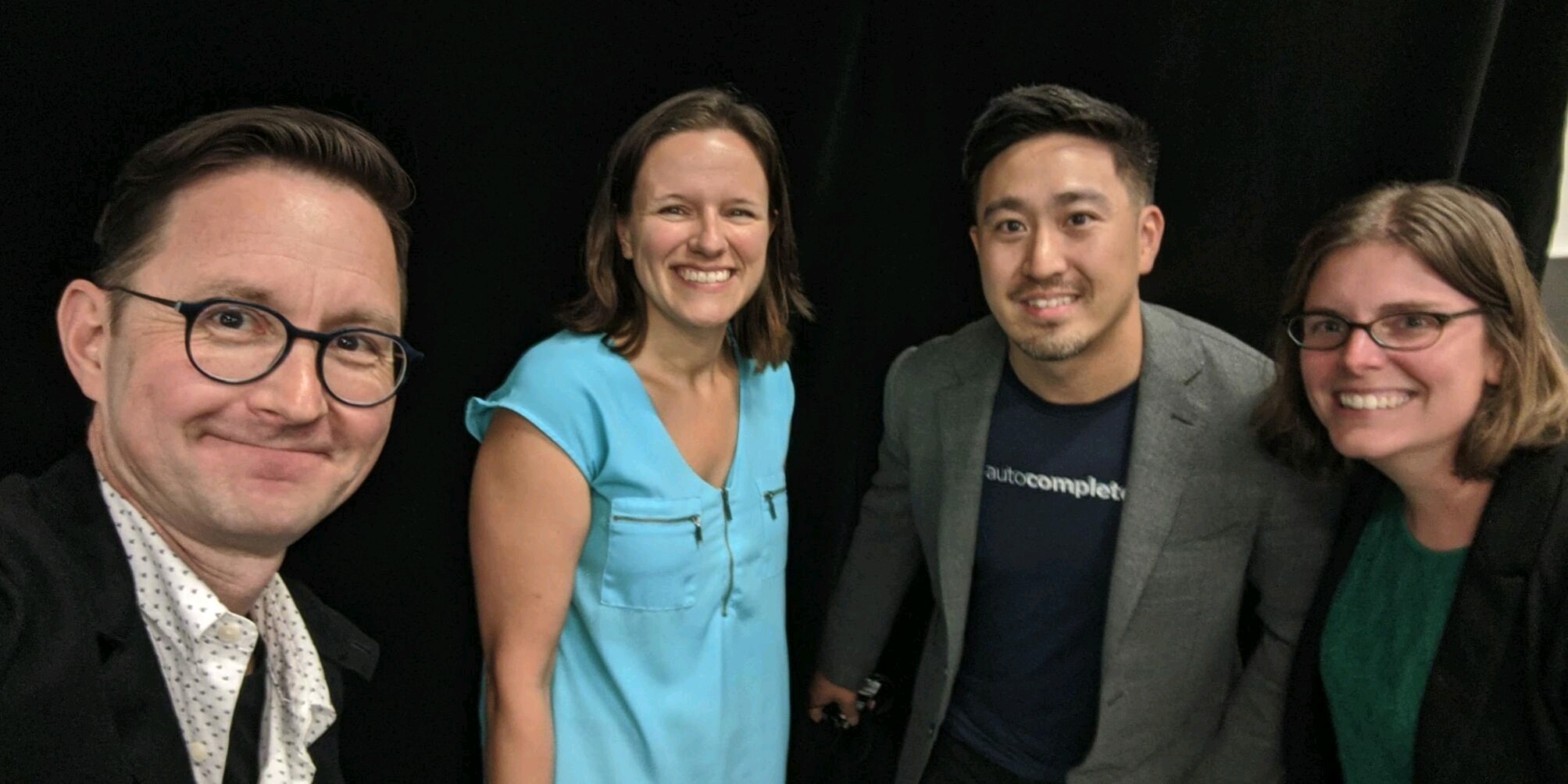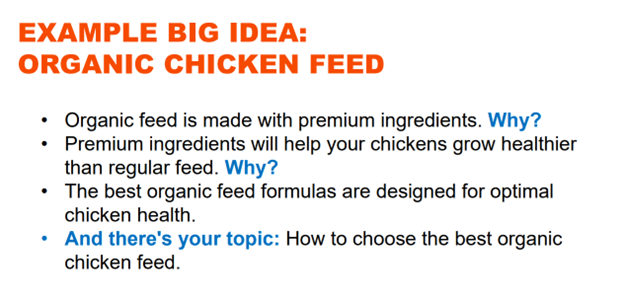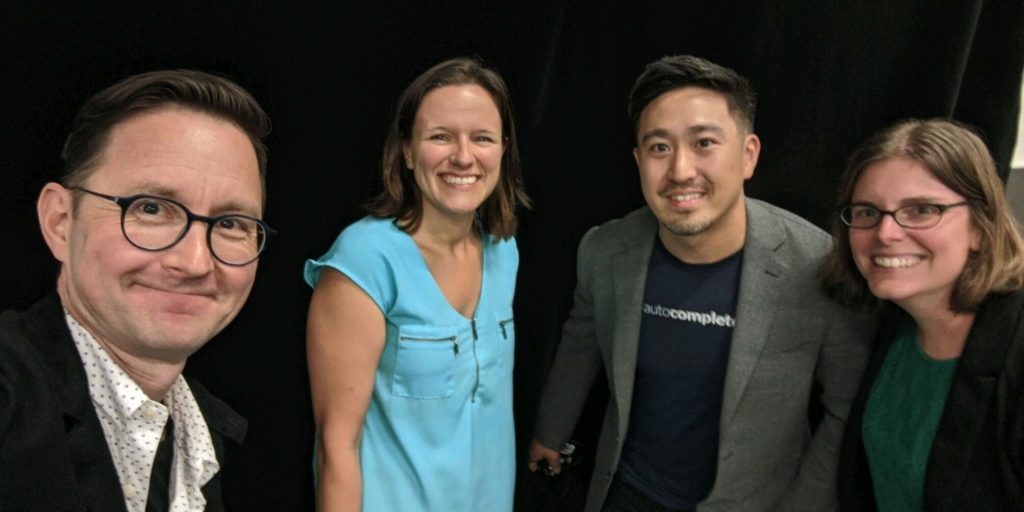
Mariah Obiedzinski Tang
September 28, 2022

Overcomplicating projects is human nature. And as a busy marketer with a million tasks on your mind, the tendency to write the hard way often overrides content best practices.
We’ve all been there. Overcomplicating content can take many forms:
Content usability is key performance indicator for a successful page, email, or blog. Crowded concepts are inefficient for your team and your audience: they elongate the writing process, slow down editing, and downgrade the user experience.
In short, trying to cover everything makes it tough to do anything—like completing conversions or proving return on your content investments.
Of course, not every piece will be easy to create, and not every easy path is best. But as these marketing experts shared at Content Marketing World 2022, simplifying your content and writing with clarity benefits your audience and business goals.
Personas should represent a narrow slice of your audience’s goals and reflect how your organization can help them achieve their goals. Focused content empathizes with the persona’s stage in the user journey and provides a path of least resistance to fulfill what they need.
Jill Grozalsky Roberson, Senior Director, Product Marketing of Sitecore, narrows down healthcare client personas—and the content her teams create—to cover three clear factors:
Solid content provides either the here-and-now solution or explicit next steps for the persona to achieve their goal. As Jill said at Content Marketing World, “The content experience is the customer experience.”
For maximum usability and conversions, declutter the conversion pathway and avoid extra content options that detract from the primary persona’s goal.
Google rewards simple, well-structured pages with higher search rankings. If you try to cover every possible persona question or next step on one page, Google—and human users—likely will deem your content irrelevant or unhelpful.
At Content Marketing World, I covered this “simple questions, simple answers” strategy with my co-presenters, Laura Hand, founder and CEO of Laura Loo Experience Design, and Sherry Bonelli, owner of early bird digital marketing.
To find the primary question your content should cover, keep asking “then what?” or “why?” until you can’t ask any further questions. The last level you can answer is the question on which to focus your content. Here’s an example of that progression from our pre-conference workshop session:

This strategy works for almost every type of content:
Want to discuss simple, SEO-rich content creation? Schedule a call with me today.
Amanda Todorovich, Executive Director, Content Marketing at Cleveland Clinic, said it best in her keynote session: “I don’t care what the internal team wants to write about. What do the patients want to know?”
As usual, Amanda is right on the money. She knows that the best content strategies focus first on what the audience wants and needs—that’s why the Cleveland Clinic website is edging toward 1 billion site visitors in 2022.
Saying no internally doesn’t mean your content should become a brandless free-for-all with no stakeholder input. Amanda’s point is simple: Effective marketers don’t write content just to appease internal audiences.
We create helpful content that answers questions, offers straightforward next steps, and—either at the top or bottom of the funnel—aligns with your organization’s overarching goals.
You don’t have to recreate the wheel for every gap in the editorial calendar or every new take on a topic. In fact, if you try to write new content for every change in guidelines or recommendations—or for every health awareness month—you’ll end up with dozens of pages that compete against themselves in search engine results.
In a four-person SEO panel led by Andy Crestodina of Orbit Media, Alli Berry, MBA, Senior Director of Content Marketing at The Arena Group, said updating content is a time-saving, search-boosting option for covering slightly new spins on evergreen topics.

Make text changes, add images or video, revise headlines…you get to keep the “link juice”—the authority factor from high-performing content that Google views as authoritative—if you update the content without changing the URL (or use proper 301 redirects if the URL must change).
Stamats highly recommends this strategy for blog and web content SEO. Showing Google that you have an authoritative, relevant page can organically boost your search rankings. And updating is almost always more efficient than starting from scratch.
Before you add another call-to-action, paragraph, or media embed to your content template, I challenge you to zoom out from the project and ask yourself, “Why am I creating this piece? What question is this content meant to answer?”
If you can’t answer within five seconds, you’re likely overcomplicating the piece.
When I feel stuck like this, I read each line or paragraph separately and think through how it relates to that primary question. If I can’t articulate it or it doesn’t fit, that content goes bye-bye.
Sometimes, the best way to get back to basics is to get another set of eyes on your content. Ask a friend or colleague who’s not part of your project to see if the content makes sense to them. Or schedule a quick call with me—I’m always happy to offer feedback and help translate complex strategy ideas into simple, user-friendly content.
Want to discuss simple, SEO-rich storytelling? Schedule a call with me today.
Related reading: Community-First Content Tips
Ready to Get Started?
Reach out to us to talk about your strategy and goals.